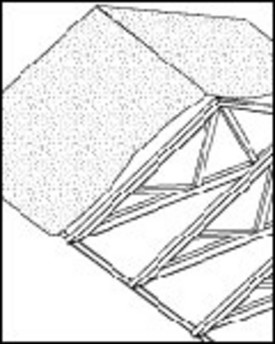 |
What You Can Do
Hurricane and tornado protection can involve a variety of changes to your house and property — changes that can vary in complexity and cost. You may be able to make some types of changes yourself. But complicated or large-scale changes and those that affect the structure of your house or its electrical wiring and plumbing should be carried out only by a professional contractor licensed to work in your state, county, or city. One example of hurricane and tornado protection is adding bracing to gable end roof framing. This is something that only a licensed contractor should do.
Brace Gable End Roof Framing
Gable end roofs are more susceptible to damage by high winds than hip roofs or flat roofs. The gable end presents a large obstacle to the wind and receives its full force. If the framing of the gable end and the rest of the roof is not adequately braced to resist the wind, the roof can fail. Roof failures, especially in unbraced gable roofs, are a common cause of major damage to houses and their contents in high winds.
If your house has a gable roof, you should check to see whether the roof framing is braced. The figure shows a cutaway view of an unbraced gable end roof. This is a truss roof, but some gable end roofs are constructed with rafters rather than trusses. Both types should be braced. If you are unsure whether your gable end roof is adequately braced, check with your local building department. After inspecting your roof framing, a building official can tell you whether bracing is required and if so, how it should be added.
Tips
Keep these points in mind if you have bracing added to a gable end roof:
- Bracing can be added fairly easily, but you should have a contractor perform the work to make sure that the bracing is properly designed and attached.
- If you have a building official inspect your roof framing, ask about other changes you may be able to make to your house to protect it from high winds.




























